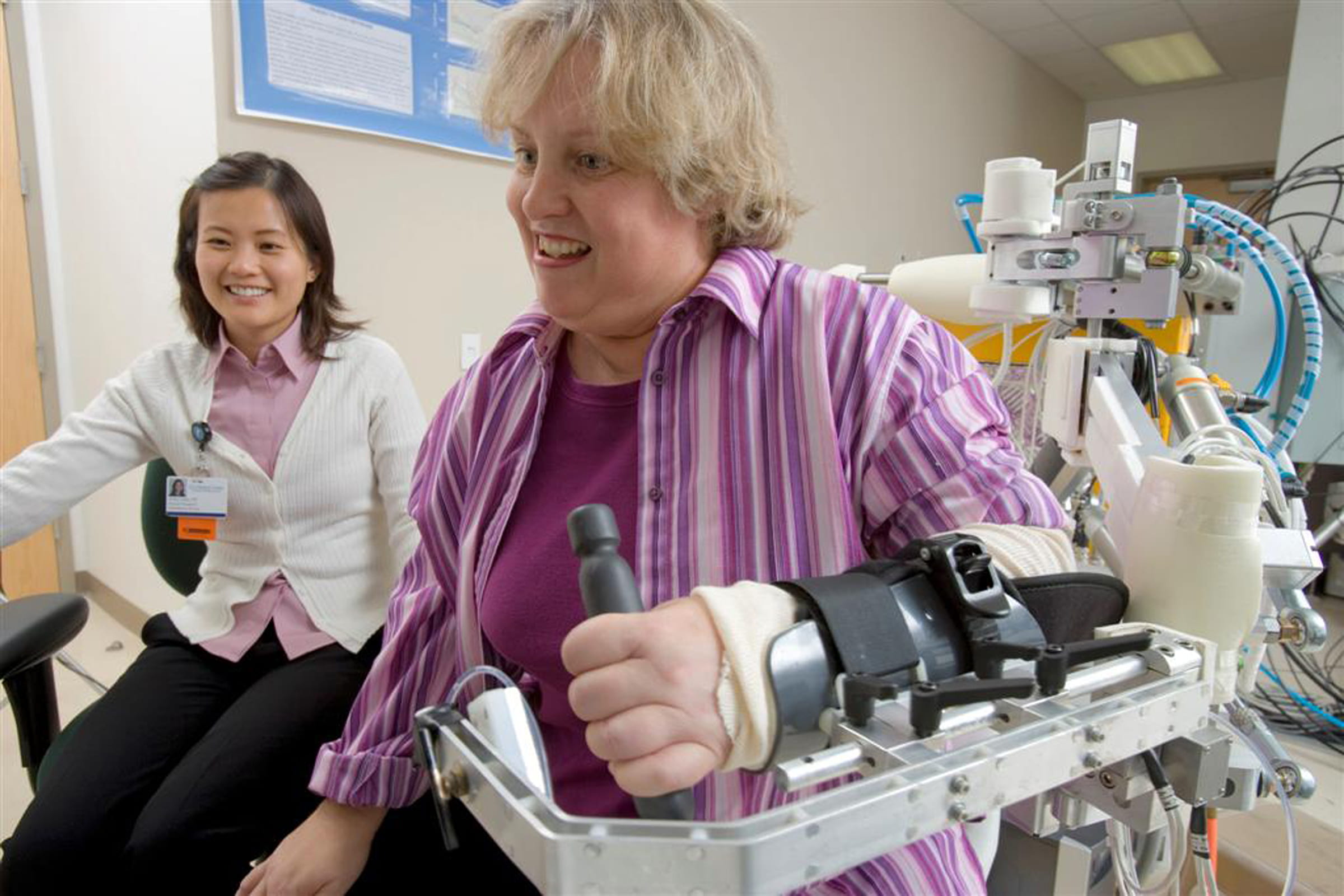Post-stroke robotic rehab
UCI team will explore use of automation in restoring manual dexterity to stroke patients.

More than half of all stroke patients suffer chronic motor impairment, with a large percentage having trouble using a hand or arm.
UC Irvine biomedical, mechanical & aerospace engineering professor David Reinkensmeyer, long interested in how new technology can enhance rehabilitation, will use a five-year, $1.5 million grant from the National Institutes of Health to determine the effectiveness of robotic assistance in restoring fine motor skills.
“We know that exercise after stroke helps rebuild brain pathways, a concept known as use-dependent brain plasticity,” says Reinkensmeyer, who’s collaborating with UCI neurologist Steven Cramer, assistant professor of electrical and biomedical engineering Mark Bachman, and former doctoral student Eric Wolbrecht, now an assistant professor of mechanical engineering at the University of Idaho. “What we don’t know is whether exercise is more beneficial if it’s aided by robots that guide patients’ hands and help them complete specific tasks.”
Current treatments were designed to be administered by physical or occupational therapists, limiting their affordability and availability. Therefore, Reinkensmeyer says, there’s been a concerted effort to develop technology that can automate some of these processes.
But does automation really make a difference, and – if so – what’s the optimal amount?
“People prefer exercising with a robot that helps them with computer games, so there’s a motivational aspect to robotics,” he says, “but it’s not clear yet whether robot-assisted exercise is more effective than exercising without it.”
To find out, researchers will partner with local hospitals, starting with UC Irvine Medical Center, to study patients in the first days after stroke. Almost 8,000 Orange County residents per year experience a stroke.
Working in the iMove Center at the California Institute for Telecommunications & Information Technology, the team will build a wearable sensor to measure people’s hand movements after stroke but before therapy begins. Reinkensmeyer envisions a wristwatch-type device that can be strapped onto the affected arm. Formerly, he says, patients entered studies several months after stroke, which left researchers in the dark about how much limb movement had already improved.
They also will fabricate a compact, robotic apparatus to assist patients at home as they exercise the impaired hand. Coupled with software, it will provide engaging games that encourage users to practice gripping techniques and move their fingers in different configurations. This “smart” device will create a real-time computer model of how much support each subject needs to complete the required tasks.
After stroke patients participating in the study finish formal physical therapy, they’ll be randomly divided into two groups. Hand robots will be used by everyone for at-home exercises, but they’ll be programmed to give one group more help. Outcomes will be measured by therapists via standard assessments and quantitative data from the robots.
Because stroke severity is an important factor in recovery, all patients will undergo pre-study brain scans to determine the degree of damage to neurons and insulating material – the “telephone lines” that carry instructions from the brain to the muscles. Researchers want to see how well brain imaging, sensor information and robot-assisted exercise can predict the extent of limb dexterity patients might regain.
The study will address three questions, Reinkensmeyer says:
- Does the increased sensory input generated by the hand robot improve the eventual outcome?
- Conversely, can too much robotic assistance decrease a patient’s effort level and hinder recovery?
- Can the specific combination of intact brain matter, post-stroke history of hand movement and robotic exercise predict which patients will experience the most favorable outcomes?
The answers will let researchers optimize robot-control algorithms for automated movement training. “I think we’ll find out which particular set of robot parameters helps stroke patients recover faster and better,” Reinkensmeyer says.